Recently Kaiser Health News reported on the growing number of Hospitals that are establishing independent nonprofit organizations called FQHC Look-Alikes, to provide primary care to their poorest patients as a way to shift often unprofitable outpatient services from their Emergency Rooms. The idea being that Hospitals could save money by directing unprofitable patients with primary care needs to FQHC Look-Alikes that receive higher Medicare and Medicaid reimbursement rates, along with significantly discounted pricing on prescription drugs.
So what exactly are FQHC Look-Alikes and what is their role in the Healthcare Delivery System?
FQHC’s
FQHC’s are Federally Qualified Health Centers. These organizations are Healthcare Safety Net providers delivering services typically in an outpatient clinic. FQHC’s include community health care centers, health care for homeless, migrant health centers, and outpatient health programs or facilities operated by a tribe or tribal organization.
FQHC organizations are eligible for and are typically receiving some form of Grant Funding under Section 330 of the Public Health Service (PHS) Act. Today there are approximately 1,400 FQHC’s operating in the United States.
FQHC Look-Alikes
Look-Alikes were created in 1990 to expand the FQHC program at a time when Government funding was not available to support the creation of more community health centers. Look-Alikes were established within Section 1905 of the Social Security Act.
Look-Alikes are not eligible to receive or compete for congressionally-appropriated funds set aside under the PHS Act or receive block grants because they fall administratively within the Social Security Act.
Requirements for Look-Alikes designation include:
- Compliance with all FQHC Clinical, Financial, and Administrative requirements
- Be a public entity or a private non-profit.
- Be governed by a consumer majority board of directors. This means that at least 51 percent of board members must be active, registered clients of the health center. Board members must also be representative of the populations served.
- Serve a Medically Underserved Area (MUA) or Medically Underserved Population (MUP). If an area does not have the MUA/MUP designation they can apply for it and can put in a FQHC Look-Alikes application while the designation is being processed. If a MUA or MUP designation is not granted, the FQHC Look-Alikes application will not be granted.
- Provide primary, preventative, health care services for all age groups. FQHC Look-Alikes must also provide oral health, mental health, enabling services, hospital, and specialty care as necessary.
- Serve all patients regardless of ability to pay. FQHC Look-Alikes must use a sliding fee scale with discounts based on patient family size and income in accordance with federal poverty guidelines.
The Services Provided by FQHC Look-Alikes Include:
| Primary, specialty, and supportive healthcare services for adults and children | Preventive dental |
| Diagnostic laboratory and radiology | Pharmaceutical care |
| Screenings for acute and chronic health conditions | Assistance with insurance eligibility, health education, outreach, transportation, translation and food support |
| Vaccinations | Mental Health |
| Family planning, and well-child services | OBGYN Care |
In essence Look-Alikes comply with all requirements of FQHC’s without receiving the benefits of government block grants while providing access to healthcare for the country’s most vulnerable populations and serve everyone—regardless of their ability to pay.
The focus then of Look-Alikes to our most vulnerable patient populations is preventative care and the management of chronic conditions to improve health outcomes by preventing complications, thereby lowering overall healthcare costs and reducing unnecessary emergency room and urgent care visits.
And This is Where Hospitals See The Opportunity –
The Opportunity
With expensive Hospital Emergency Rooms providing primary care treatment to often uninsured, underinsured or Medicaid patients at a loss, the Hospitals are seeing the potential of diverting these patients to Look-Alikes for their primary care needs. The treatment of these patients at a Look-Alike rather than in an Emergency Room setting reduces financial losses to the hospital by the uninsured or those on Medicaid which reimburses hospitals at a significantly lower rate than a Look-Alike.
Hospitals have been either converting Primary Care Clinics into Look-Alikes or building new Look-Alike facilities which are often established on Hospital campuses or within short distances of the Hospital.
According to Kaiser Health News at least eight hospital systems have converted existing clinics or built new ones with FQHC Look-Alike Designations between 2019 and 2022. Typically, Hospital established Look-Alikes will not only donate some initial level of funding to start up a clinic, but they may donate their existing clinics as part of converting into an FQHC Look-Alike. An example of this model is Beverly Hospital in Montebello, Ca. as they providing both financial support and donated their women’s clinic as a way of establishing Beverly Care as an FQHC Look-Alike.
The secondary opportunity seen by Hospitals is an attempt to improve the problem of Emergency Room overcrowding. The American College of Emergency Physicians, defines overcrowding as “a situation that occurs when the identified need for emergency services exceeds available resources for patient care in Emergency Room, hospital, or both”.
Overcrowding simply stated is the imbalance between the constant increase in healthcare demand and the lack of hospital resources, both in the context of individual departments and in the context of the Emergency Room. While studies have concluded that Emergency Room overcrowding is not significantly impacted by primary care, non-emergency patients, anecdotal evidence from Hospitals that have employed the FQHC Look-Alike model have suggested that they are experiencing a reduction in the number of unnecessary Emergency Room visits by at least 20%. Many of those visits were from uninsured patients.
Most studies have tended towards improvement of onboarding, patient flows, and internal hospital processes as the key to improvement of Emergency Room operations and efficiency rather than the volume of patients requiring emergency services at any given time. Regardless of what your position is concerning the causes of Emergency Room overcrowding, the effects on patient care and outcomes are undeniable. Multiple studies have shown that there is a growing percentage of patients abandoning an overcrowded Emergency Room without being seen.
The opportunity then for Hospitals becomes reducing financial losses and using those funds to provide better healthcare services, while expanding primary care coverage to the uninsured and underinsured through the establishment of local community FQHC Look-Alikes.
How USC provides solutions to FQHC Look-Alike’s
USC has actively expanded our presence in 2022 into regions that have historically been underserved with health services. New regional locations for USC include Morgantown, West Virginia serving the entire state of West Virginia, Southwestern Pennsylvania, and Eastern Ohio. Other new locations include Nashville, Tennessee serving Eastern Tennessee, the entire state of Kentucky, and Alabama. We acquired Hi-Tech Medical Imaging Inc. in Olive Branch, Mississippi serving Western Tennessee, the entire state of Mississippi and Arkansas. Lastly we have opened an office in Las Vegas, Nevada serving customers throughout the Southwestern United States.
In addition to becoming members of these communities and serving them locally, Ultrasound Solutions has established a variety of products and services within our portfolio of offerings that are affordable tools for Healthcare Delivery providers in many of underserved markets.
Product offerings include the EVA Colposcope that is a handheld device which can be used for patients requiring a cervical examination. Portable, easy to use, affordably priced and most importantly it simplifies your clinical workflow by streamlining how you conduct, record, and review patient cases and gynecological examinations.
We also provide the Edan Acclarix AX3 portable ultrasound system for OB/GYN examinations. The Acclarix AX3 is an appropriate Point of Care solution, and is a portable ultrasound system with dual probe port capability. Designed from the relentless focus on delivering uncompromising performance at a cost effect price to the point of care ultrasound community. Mammography solutions include a 2D Planmed Clarity system which can be used for breast screening purposes as a low cost alternative for providing comprehensive women’s health care to underserved communities.
USC has also developed a program for discounted pricing on Service, Maintenance and Repair of imaging devices at FQHC Look-Alike providers. From our regional presence, outreach to the FQHC Look-Alike market, product and service offerings, USC is working to provide the tools needed for Health Care Delivery providers of our most vulnerable populations.
You can learn more at www.uscultrasound.com








